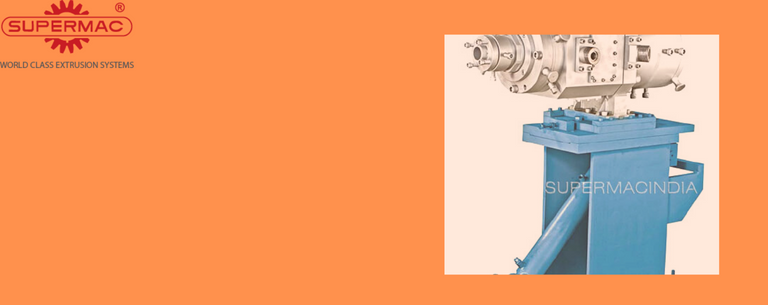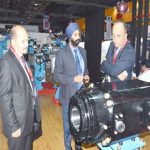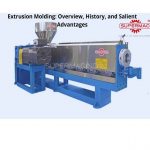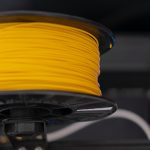The cross head extrusion process is one of the most important procedures adopted by wires and cable manufacturers to coat different types of wiring and cabling solutions by applying the polymer. The basic procedure is all about wire and cable pulling to serve the coating purpose at a uniform rate making use of a crosshead die wherein it is covered with plastic in a liquid state. Extrusion machines and triple cross head manufacturers in India design and develop these cross heads to carry out this procedure in a better way.
This type of extrusion process for the coating is comprehensively utilized for wires and cables that are used in the industries such as electronics, telecommunications, and a large number of electrical applications. For more and better coatings, various manufacturers with the required infrastructural prowess are these days making use of two or even more extruders in tandem.
Let’s take a look at the making of standard two-wire-plus-ground cable through the use of crosshead extrusion
To understand things in a better light, take the example of the making of standard two-wire-plus-ground cable that most commonly finds application in domestic wiring. Initially, manufacturers use white insulation to coat the copper wire, and black is used for the other. When it comes to performing the secondary procedure, the following steps are taken:
- A paper-wrapped copper wire is strategically blended with the black and white insulated wires. The third wire here is utilized for the ground.
- Each and every wire is fed through the die
- The final insulating jacket is used for safeguarding all the wires together in the die.
- The concerned insulating jacket also extends the required support in holding the three wires in the plastic sleeve.
The continuous process of production is yet another approach to manufacturing this product. This process is carried out by using two extruders for the application of the black and white coating on the two conductive wires. As a result, what happens is as follows:
- These two concerned wires are brought together making use of a third copper ground wire.
- The three wires are sent making use of an efficient third crosshead die manufactured by the leading triple cross head suppliers in India wherein the application of the exterior jacket takes place.
Since all the 3 extruders run at a similar speed, the final product comes out calling for the minimum possible need for handling. The only downside of this process is that a robust amount of loss in production takes place if any of the 3 extruders do not operate efficiently.
Wire coating generally takes place via single-screw extruders wherein the crosshead extrusion process is done. The principal job of an extruder is to melt the resin and take it forward to the die while maintaining an even and constant melting temperature and pressure. The crosshead extrusion process is executed by making use of so many general tools and equipment in line. Some of them include the following:
- Cable source for feeding the line
- Unwinding station or some other wires
- Pre-tensioning station for taking care of the tension during the entire process
- Preheat the station for the preparation of wire to be readied for coating
- Crosshead die
- Cooling trough for the effective and efficient solidification of the polymeric coating
- Test stations to make sure that the wire is flawlessly coated
- Puller to take care of constant tension during the entire process and procedures
- Winder for collecting the product.
Protocols and parameters for ensuring outstanding extrusion quality control
To ensure outstanding wire covering extrusion quality, it is quite fundamental to recognize, control, and screen numerous protocols and parameters like tensions, quality of the die, working circumstances, and material in-feed. Different imperfections in the cycle need to be distinguished to decrease their effect on the end product quality. Deformities can be brought about even by a single source or the total impact of a few variables, which might emerge at any phase of the process. Harsh surface, thickness variety, lopsided wall thickness, breadth variety, and a focusing issue are some of them.
Here we will principally examine the issues associated with the final geometries of the wires and cables. There are many inspection devices available for measuring the outside diameter. They, by and large, have the same non-contact technological features and attributes with 2 opposite measuring axes. A portion of the further developed devices likewise accompanies 3 or even 4 concerned axes. The primary purpose is to provide manufacturers with the ability to measure the diameter of the extruded product continuously.
A look at some of the most common polymers used in the wire and cable coating applications
A comprehensive range of polymers is used to cover the wires and cables making use of the crosshead extrusion methodology. Some of the top features and attributes that make these polymers ideal materials for wire coating include the following:
- Unmatched flexibility
- Amazing electrical properties
- Great ability to withstand the abuse, and
- Exemplary long-lastingness.
The list of some of the most common polymers includes the following:
- Polypropylene
- Fluoropolymers
- Polyethylene
- Polyvinylchloride
- Thermoplastic elastomers
- Ethylene propylene copolymers
- Polyamide
- Polybutylene terephthalate
During the wires and cables coating procedures, it is the cross linked polyethylene that is always put into use. In this process, the wire is extrusion coated using this particular polymer. When the coating process ends, the polyethylene is cross-linked onto the wire.
Concluding Remarks
Supermac, as one of the leading triple cross head manufacturers in India, has come up with a new series of Cross Heads. These cross heads are compact in design and uncompromised in providing accuracy in distributing the extruded material over the conductor. This new series of innovative cross heads aims at offering ease of operations in insulation and sheathing application of round, sector shape & multi-core cables. Some of the top models include Fixed Centering, Manual centering, Single Cross Head, Dual Cross Head, and Triple Cross Head.





